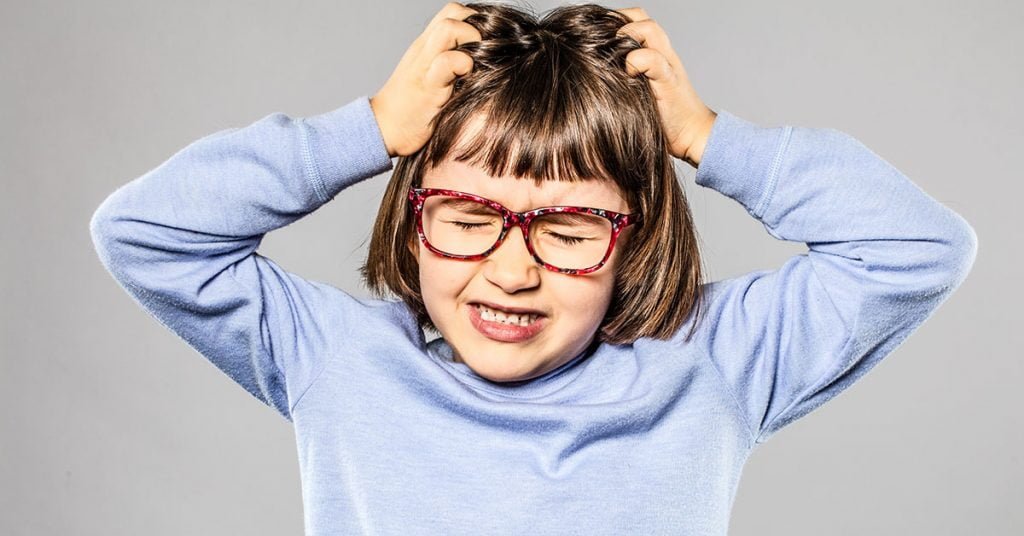A Parent’s Guide to Head Lice Prevention
September 15, 2020

September is Head Lice Prevention Month, and with kids spending time in school and childcare again, it’s a great time to brush up on how to avoid these icky little parasites.
Head Lice Prevention Tips
According to the American Academy of Pediatrics, head lice are spread most commonly by direct head-to-head (or hair-to-hair) contact. The risk of a lice infestation from a louse that has fallen onto furniture or carpet is very small. However, it is possible for them to spread via clothing or other belongings if lice have crawled onto or nits have attached.
How to Avoid Lice in the First Place
- Teach kids to avoid head-to-head/hair-to-hair contact with other children at school, daycare, sleepovers, or extracurricular activities.
- Teach kids not to share belongings that touch their heads or hair
- Combs and brushes
- Hats
- Hair ties, clips, or headbands
- Headphones or headsets
- Bike helmets
- Towels
- Scarves
Prevent the Spread if You Know Someone Has Lice
- Even if the risk is lower than head-to-head contact, you and your children shouldn’t lie on beds or other furniture that has been in contact with someone with head lice.
- Clean/wash items that have been in contact with the person with lice in the 48 hours before they received treatment.
- Machine wash and dry clothing, towels, and linens using hot water (130°F) and a high heat drying cycle.
- Items that aren’t machine washable can be dry-cleaned or sealed in a plastic bag and stored for two weeks.
- Disinfect combs and brushes used by a person with head lice by soaking them in hot water (at least 130°F) for 5–10 minutes.
- Don’t use insecticide sprays or fogs in your house. They’re not necessary and can be harmful if they are inhaled or make contact with skin.
What to Do if Your Child DOES Get Head Lice
If those head lice prevention tips don’t work and your child does get lice, then you should only use treatments that are approved by your child’s pediatrician. Medication should only be used on children who have confirmed living head lice.
The AAP has the following safety guidelines for using lice medication:
- Follow the directions on the medication exactly as it’s written.
- Apply the medication for your child or have another adult do it. Do not let your child apply the medication.
- Out of an abundance of caution, ask someone else to apply lice medicine to your child if you’re pregnant or breastfeeding.
- Don’t leave your child unattended when he/she has the medicine on his/her head.
- Don’t place a plastic bag on your child’s head.
- After the first treatment, check with the pediatrician before beginning repeat treatment.
- If you have tried a treatment and it hasn’t worked, then you should talk to your child’s pediatrician again.
After finishing treatment with lice medication, check everyone in your family for lice after one week. If live lice are found, contact your health care professional.
Make an Appointment
Holly Springs Pediatrics is committed to providing quality care to your kids at all times. That includes being there in uncertain times. We will always prioritize the health and safety of your family. If you have more questions about head lice prevention, please give our office a call
at (919) 249-4700 to schedule an appointment or talk to a staff member.
